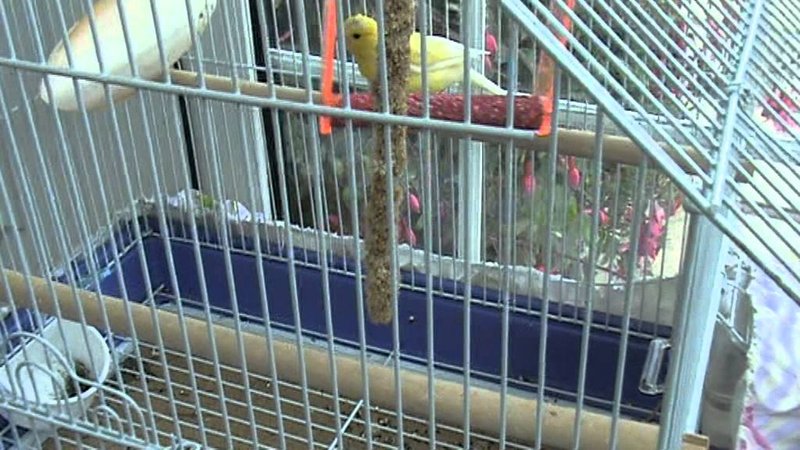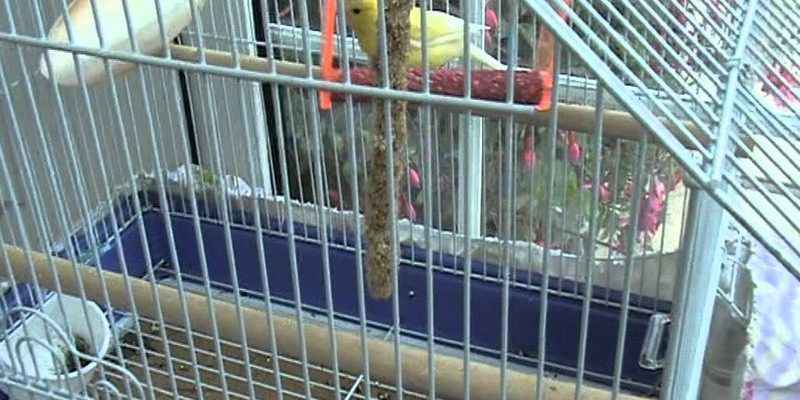
Imagine your canary flitting around, chirping cheerfully in a space designed just for them. The right cage size, thoughtful placement, and a few essential accessories can help transform a simple cage into a delightful retreat. So, let’s explore how to set up that perfect canary paradise.
Choosing the Right Cage Size
When it comes to your canary’s cage, size really does matter. A good rule of thumb is to choose a cage that is at least 24 inches long, 18 inches wide, and 18 inches high. Why? Well, canaries love to fly, and having room to stretch their wings makes a significant difference in their happiness and health.
Think of it this way: Would you want to live in a tiny studio apartment with no room to move? Probably not! For a single canary, those dimensions will do just fine, but if you have more than one, you’ll want to increase the space. A larger cage not only provides room for movement but also allows for more accessories without overcrowding.
You might also want to consider the cage layout. Look for a rectangular cage rather than a round one because it offers more space for flying. If you can’t decide between two sizes, always opt for the larger option. It’s better to have extra space than to limit your canary’s activity.
Where to Place Your Canary’s Cage
Finding the right spot for your canary’s cage is just as important as selecting the cage itself. Canaries thrive in environments that mimic their natural habitat. Ideally, you want to place their cage in a well-lit area, but avoid direct sunlight, which can overheat them.
Consider a spot where your canary can enjoy a view—like a window or a quiet corner of the living room. This not only keeps them entertained as they observe the world outside but also brings them closer to you. Placing the cage a few feet off the ground can help them feel safe and secure.
And here’s a tip: Keep your canary away from drafts and cold areas. Birds are sensitive to temperature changes. If you have an air conditioner or heater, make sure those vents don’t blow directly on the cage.
Essential Accessories for Your Canary’s Cage
Now that you’ve got the size and placement sorted out, let’s talk accessories. You might be wondering what your canary really needs in their home. Here’s a quick rundown of must-have items:
- Perches: Vary the thickness and material. Natural wood perches are great for their feet.
- Food and Water Bowls: Use separate containers to keep things clean, and make sure they’re easy to access.
- Bathing Dish: Canaries love to bathe! A shallow dish with clean water will keep them happy.
- Toys: Add a few chew toys and swings to keep your canary entertained.
Each accessory plays a role, ensuring your canary has a stimulating environment. You might even find them spending hours flying from perch to perch or playing with their toys! Remember to check and replace accessories regularly for cleanliness and freshness.
Creating a Comfortable Environment
Beyond the basic accessories, think about the overall vibe of the cage. You want to create an environment that feels safe and cozy. Adding natural elements like small branches can help mimic their natural living conditions.
Consider using a layer of soft substrate like shredded paper or coconut fiber at the bottom of the cage. This can help with cleanliness and comfort. Just avoid sand paper as it can hurt their feet.
Lighting is also an essential aspect of your canary’s setup. Ensure they receive a mix of natural light and a full-spectrum light bulb designed for birds if natural light isn’t adequate. This can help keep their feathers vibrant and promote general well-being.
Maintaining Your Canary’s Cage
Once you have everything set up, regular maintenance is key to keeping your canary happy and healthy. Start by doing a daily check for any leftover food or droppings. A quick clean can help prevent bacteria build-up and keep your canary’s environment fresh.
At least once a week, you should do a deeper clean. This involves removing all accessories, disinfecting the cage, and replacing the bedding material. Use bird-safe cleaners, as some household products can be harmful to your feathered friend.
You’ll also want to monitor your canary for signs of stress or illness. Changes in behavior, like excessive chirping or lethargy, can indicate that something isn’t right in their environment. Addressing such issues early can go a long way toward keeping your canary thriving.
Understanding Your Canary’s Behavior
Canaries are social creatures, and their behavior can offer insights into how they’re feeling about their setup. A happy canary often sings and explores their cage, while a stressed bird may stay quiet or hide.
Pay attention to how your canary interacts with its environment. If they seem restless or bored, it might be time to rearrange the cage or introduce new toys. Here’s the thing: keeping their environment dynamic and engaging can significantly enhance their quality of life.
Sometimes, if your canary doesn’t seem happy with their setup, it could be worth considering if they’re alone. Canaries usually thrive in the company of others, so pairing them with a buddy might improve their mood. Just ensure they’re compatible breeds to avoid conflicts.
Setting up a canary cage involves more than just choosing an attractive cage. It’s about creating a space where your canary feels safe, stimulated, and loved. By carefully selecting the right size cage, finding that perfect spot, and incorporating essential accessories, you can be sure that your canary thrives.
With regular maintenance and a keen eye on their behavior, you’ll not only have a happy bird but also a beautiful singing companion. So, get ready to enjoy the cheerful melodies of your canary in its delightful little haven—because when your canary is happy, you really can’t help but feel joy too.

